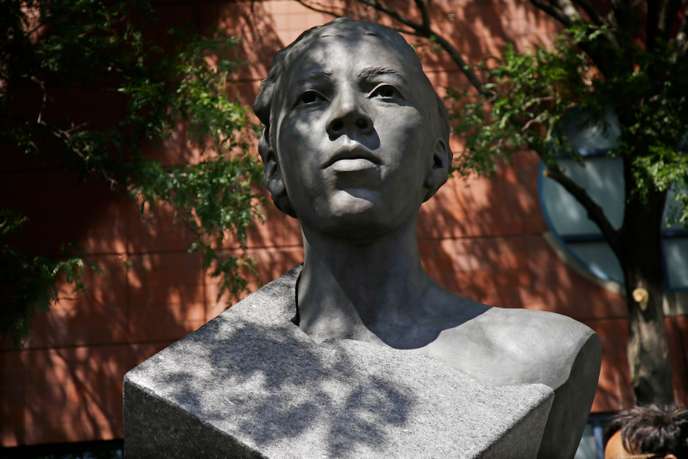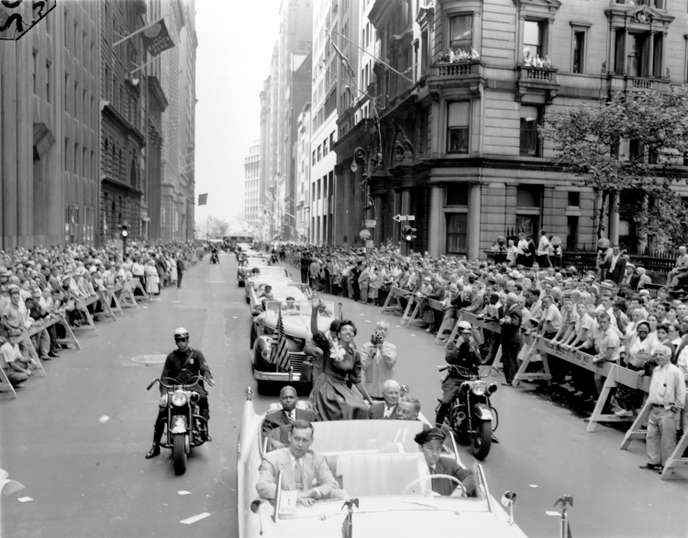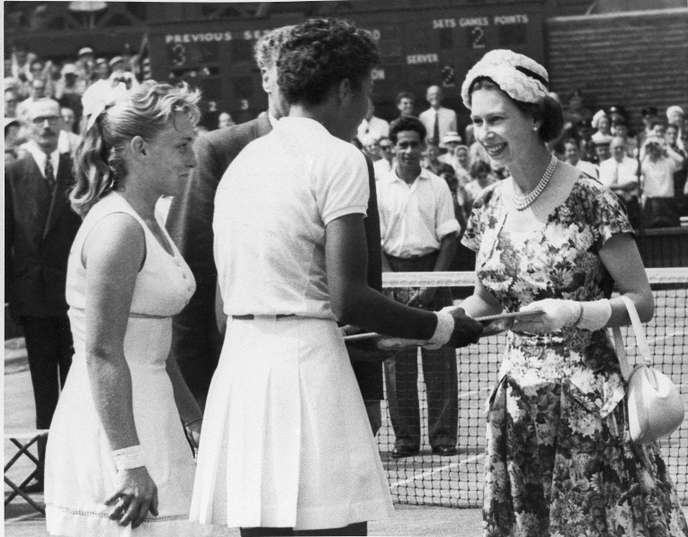
RAnd certainly not the context of America in the 1950s, predestined this extraordinary athlete to lead this impressive career. Barrier-breaking barriers in a racially segregated America, tenniswoman Althea Gibson has paved the way for many African-American champions, before falling into oblivion. New York Times, who devotes a long portrait to him.
An omission that was repaired Monday, August 26 for the opening of the tournament of the US Open, sixty years after his exploits, with the inauguration of a statue in his effigy at the National Tennis Center Billie-Jean-King, in front of Arthur-Ashe Stadium, Queens, New York. The first, Billie Jean King, is considered one of the best players of all time when the second, Arthur Ashe, was the first black man to win a Grand Slam title.

A few figures make it possible to measure the importance of Althea Gibson in the history of the game and the struggle for equality in sport. Twelve years before Arthur Ashe, and more than four decades before the advent of the Williams sisters, Gibson was the first black woman to win a Grand Slam title at Roland Garros in 1956, then at Wimbledon and the US Open. , in Forest Hills – the ancestor of the US Open, the following year. She thus makes a historic first by raising at 30 the trophy on the London turf that the Queen of England Elizabeth II, attending her first competition, will hand him in person.
Eleven Grand Slam victories
In three years, between 1956 and 1958, the American will win no less than five Grand Slam singles, eleven doubles. Despite this unusual career, his career has not entered the pantheon of legends of sport, and very few tributes will be returned.
In France, a small Parisian gym from 12e borough was named in his honor in 2017, a tennis tournament for seniors (players aged 35 and over) also bears his name in Croatia, and she received some honorary awards. But nothing that really lives up to his incredible record. So, today, "Althea Gibson is virtually unknown to the general public and Parisians", recognized three years ago at World Nicolas Bonnet, councilor of Paris, who brought the proposal to give his name to the sports complex in Paris.
This occultation ended this week in his country when the US Tennis Federation unveiled a bust of Althea Gibson emerging from a granite block. "It was time, perfect! ", greeted Angela Buxton, Althea Gibson's friend and partner in The Undeafeated :
"I think that for more than 50% of people, it will be a revelation, because in my country (England) they do not remember it at all. She has done a great job to improve the place of blacks. Even with the two triumphal parades that took place in her honor, she was still not allowed to go to a hotel where the Whites slept nor to drink in a fountain where Whites drank, but she helped to combat this state of mind. made. "

The athlete, who died in 2003, was born in South Carolina in 1927 to half-breed parents on a cotton farm, a status barely placing them above that of a slave. Her family moved quickly to New York Harlem when she was still a baby. Very quickly, she shows great aptitude for sport and trains regularly with her father in boxing, playing basketball and tennis …
"It all started when we played padel (snowshoeing on court smaller than tennis) in the street, sponsored by the Police Athletic League, with two rackets and a sponge ball, a short court and a small net », explained Althea Gibson in 1989 at the BBC.
At 12, she won the girls padel championship of the city. With her sleek, athletic look, she will be spotted some time later by Buddy Walson, the street games organizer, through which she will join Harlem's Cosmopolitan Tennis Club, a private tennis club for the West African-American middle class. Harlem.
Thunderstorm and insults
Dr Hubert Eaton and Dr Robert Johnson, two prominent civil rights activists, spot her at the American Tennis Association's segregated national tennis competition. Convinced of her bubbling talent, they take her under their wing. With one goal: to make it the first black tennis champion.

Between 1947 and 1956, she will win ten of these black-only competitions, but for a long time it is forbidden to play with whites at the Forest Hills tournament. Under the supervision of these protectors, they still send applications, all of which will be rejected or "Lost", relates the New York Times. Everything changed in 1950, when Alice Marble, 18 Grand Slams on the clock, decided to take sides and sent a letter to theAmerican Lawn Tennis Magazine :
"If Althea Gibson is a challenge for the current generation of players, it is only right that they take up this challenge. The entry of blacks into national tennis is just as inevitable as it has already happened in baseball, football or boxing. (…) I think it's time to face the facts. If tennis is a game for women and men, I think it is time for us to act a little more like decent people and less like hypocritical moralizers. "
A letter to vitriol that will result, one month later, the entry of Gibson at the Forest Hills National Championship. In the summer of 1950, she played her first match against the favorite, Louise Brough, a Californian blonde who then reigns supreme over the Wimbledon tournament. Under the racist slurs that fall from the stands, she leads (1-6, 6-3, 7-6) before the match is interrupted by a violent storm, reports the New York Times in an archive. She will finally lose the match the next day, but her career is launched.
The one we nicknamed the "Jackie Robinson of tennis" – although she did not like this title and refused to be perceived as a representative of the Blacks – will cumulate eleven Grand Slam titles and became an inspiration for generations of players. In 2016, sixty years after her first Grand Slam victory, Serena Williams, who was the first African-American since Gibson to win a Grand Slam tournament at the US Open in 1999, paid tribute to her eldest in Roland French Open: "Althea has given me happiness and the pride of being black. (…) She was a pioneer for all tennis, not just women's tennis. "




